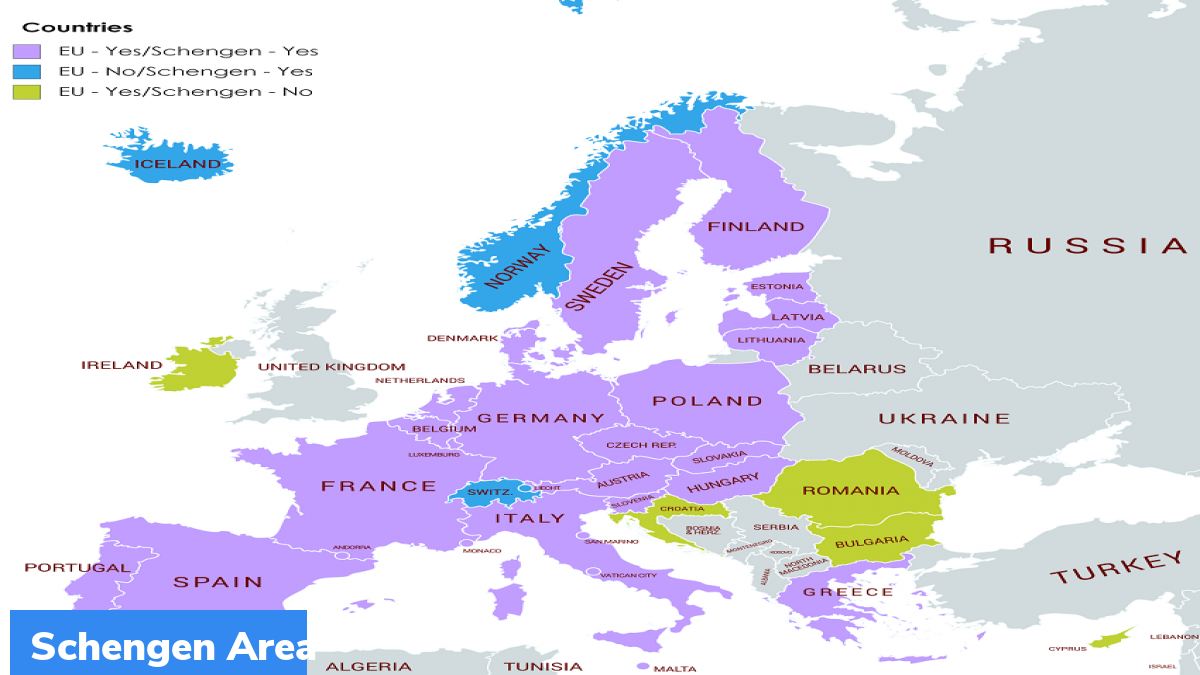What is Schengen Area?
The Schengen Area is an area that comprises 26 European countries that have abolished all passports and border control at their respective mutual borders.
Overview:
- The name of this area comes from the 1985 Schengen Agreement that was signed in Schengen, Luxembourg.
- This region serves as a single jurisdiction for international travel, with a unified visa policy.
- Of the European Union’s 27-member states, 22 take part in the Schengen Area.
Usage of the Schengen Agreement
Over 400 million EU citizens, as well as non-EU nationals, tourists, businessmen, or other persons who are legally present on the EU territory, are allowed free movement, through this area. Not only does this agreement allows passport-free travel, but it also demands that the nations adopt certain common rules related to migration, thus, allowing refugees and others on visas to move around freely. Under this agreement, the police have been given access to chase all suspected criminals across the borders of the member nations as well as to access a database related to stolen objects and wanted people that are shared among the members. Under this agreement, the states are also allowed to reinstate border checks for the reasons of national security and “public policy for a time period of up to 10 days. Under exceptional circumstances, this can be extended for a maximum time period of up to two years.
Member Nations
Out of 27 EU countries, 22 are members which are Belgium, Austria, Denmark, Czech Republic, Denmark, Finland, Estonia, France, Greece, Germany, Hungary, Italy, Iceland, Latvia, Luxembourg, Lithuania, Lichtenstein, Netherlands, Malta, Norway, Portugal, Poland, Slovakia, Spain, Slovenia, Switzerland, and Sweden.
Of the five remaining EU members Croatia, Bulgaria, Romania, and Cyprus are legally obliged to join in the future. An opt-out has been maintained by Ireland and it instead operates a visa policy of its own. Liechtenstein, Iceland, Switzerland, and Norway, are not EU members but have still signed agreements related to the Schengen Agreement.
Three microstates of Europe San Marino, Monaco, and the Vatican City maintains open borders and thus are considered the Schengen Area’s de facto members. This is due to the fact that it is practically impossible of travelling to or from these countries without transiting through a Schengen member country.
Month: Current Affairs - March, 2022
Category: International / World Current Affairs


